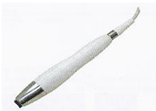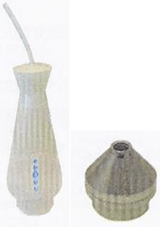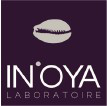
What are the properties of skin ?
2m² and 5 kg in adults, the skin is one of the most important organs in the human body. It forms our outer container and it plays a protective role against multiple aggressions that we may be exposed to. It is also capable of regulating the temperature of our body, intervene into our sense of feeling and play an important role in our immunity.
Made up of 3 layers, the epidermis, the dermis and hypodermis, this is all covered by a hydrolipidic film made up of a mix of sweat and sebum. This film ensures the impermeability of the skin and limits microbial aggressions. Furthermore, the epidermis is not impermeable and allows active ingredients or hydrating agents from cosmetic skin care solutions to pass through it. Because of the permeability of the epidermis, the skin is continually losing water, known as transepidermal water loss (TEWL), which is measurable and reflects the level of hydration of the skin.
70% of our body is made up of water, and so it is essential to provide it with more water, since it naturally secretes between 1 and 2 litres per day. This is the reason why it is recommended to drink between 1.5L and 2L of water per day.
In order to understand the individual properties of our skin, the IN’OYA Lab provides OYA SKIN DIAG technology, a precise and sophisticated diagnostic tool which allows the more important characteristics of our skin to be explored to learn its level of hydration, the quantity of sebum present on the surface of the skin or even the phototype of the skin. The diagnostic tool also allows us to evaluate the apparition of wrinkles or hyperpigmentation spots. These indicators will allow us to better choose the most adapted care for your skin.
HOW DO WE EVALUATE THE WATER CONTENT OF THE SKIN ?
70% of our bodies are made up of water. Every day, an input of water covering these loses if required of around 1.5 to 2 litres.
But how does our body lose water ?
Through the bladder and other organs, but there is also water loss that occurs via the skin. It is mainly known as trans-epidermal water loss (TEWL), which is made possible because of the permeability of the epidermis. This TEWL is measurable and advises us of the level of hydration of the stratum corneum which forms the uppermost layer of the skin. The IN’OYA Lab makes use of a precise and sophisticated tool which allows them to evaluate the TEWL of an individual. It works via a probe with a sensor which is capable of measuring the conductivity of the skin after emitting an electric field. This instant and painless measurement gives a reliable indicator of the hydration level of the skin.
The OYA Skin DIAG hydration sensor

HOW DO I DETERMINE MY SKIN TYPE ?
The uppermost layer of the skin, the epidermis, is covered with a lipid film made up of sebum which ensures a certain amount of protection against microbial agents and maintains hydration. The sebum also ensures a certain impermeability of the skin and is, in part, responsible for the softness of the skin. However, when too much sebum is secreted, it can cause the appearance of acne and is responsible for the oily appearance of the skin. On the other hand, a lack of sebum is responsible for dryness of the skin and hair.
The OYA Skin DIAG Diagnostic tool can precisely evaluate the level of sebum on the surface of the skin, a very god indication of the nature of the skin. It’s thanks to a photometric sensor attached to the tool which collects the secretion of sebum, which the tool can then measure instantly to find the sebum production from the forehead or the cheeks. Analysis of these two regions is indispensable to create a reliable indication of the skin type. In fact, the forehead as well as the nasal wings and the chin form the T zone of the face, which is naturally more oily than the cheeks.
OYA Skin DIAG photometry & tool for analysis of the sebum levels

HOW CAN I UNDERSTAND MY SKIN TYPE IN MORE DETAIL ?
A second analysis measuring the dilation of the pores is a supplementary element used to better understand the skin type. The pores of the skin take the form of microdepressions on the surface of the skin which correspond to the opening of the pilosebaceous ducts. Very constricted in children, they appear more clearly on the faces of adolescents suffering from acne. In fact, the surge of sebum tends to distend the facial pores. Furthermore, the dilation of the pores on the face is also a sign of aging, loss of collagen in the dermis, causing a loosening of the skin and the pores, giving them an egg-shaped and more dilated appearance.
The OYA Skin DIAG tool allows a precise evaluation to be carried out on the dilation of the pores thanks to a photometric sensor and a lens which allows us to measure the size of the opening of the pores, reflecting their dilation. This analysis perfectly complements the sebum level analysis for skin that tends to be oily or older women’s skin with wrinkles.
OYA Skin DIAG pore dilation measurement sensor

SHOULD I BE WORRIED ABOUT HYPERPIGMENTATION SPOT PROBLEMS ?
Hyperpigmentation spots can appear on all types of skin no matter the phototype. They are classified into 3 large groups according to their origin. Sun spots, more commonly visible on lighter skin, are caused by unprotected exposure to the sun. They manifest episodically in the form of a melasma or even following a lifetime of sun exposure. This is the case with age spots. Hormonal spots, more common in dark skin, surface after a significant hormonal fluctuation and mainly affect women. The pregnancy mask is a good example of this. Finally, inflammatory spots are most frequently found in dark to black skin, surfacing after an aggression to the skin, even a benign aggression, such as an acne spot, a sting, a burn or a shock... They represent the main cause for dermatological consultations for black women. Ungainly, these spots can be eradicated after precise diagnosis and with the help of specific and targeted complexion correcting skin care products. IN’OYA’s range of complexion correcting products is especially effective for this type of problem in more pigmented skin.
The OYA Skin DIAG tool is a precise, fast and effective measurement tool to evaluate the severity of the spots and it represents a key element in the management of hyperpigmentation spots. For this use, there is a photometric sensor coupled with a lamp which allows hyperpigmentation spots to be be clearly detected by contrasting them with the natural complexion of the skin, whatever the phototype of the skin. Analysis of photos taken, instantly allows us to learn the state of development of the spot.
OYA Skin DIAG photometric sensor to analyse hyperpigmentation spots

WILL I GET WRINKLES ?
The number 1 worry for light skinned phototype women is wrinkles. But they aren’t the only signs of aging on the skin. An inevitable phenomenon which is more obvious in slimmer people, it is nevertheless possible to alleviate the appearance and depth of wrinkles by adopting good habits and by using adapted cosmetic skin care. The hydration of the skin represents the best way of limiting the appearance of wrinkles. A lot of sun exposure, smoking and stress are 3 factors which aggravate wrinkles and are relatively easily to protect yourself from. Wrinkles are classified into 2 groups, one of which is the so-called expression wrinkles, the signs of the person facial expressions, which appear first. Then there are wrinkles known as aging wrinkles, which are caused by the loosening of the skin with age.
Scanning wrinkles is mainly carried out in 3 locations, on the forehead, on the nasolabial fold wrinkles and on the crows feet. Evaluating the depth and magnitude of these wrinkles allows us to advise each woman on which skincare solution to apply and the daily habits to adopt to moderate the appearance of wrinkles.
To analyse the effect of time on the skin, the IN’OYA Lab has an analysis tool which determines the 3 most wrinkle affected regions, namely the forehead, the nasolabial fold wrinkles and the crows feet. The OYA Skin DIAG tool uses a photometric sensor and a specific applicator which allows us to clearly learn the depth of the wrinkles.
Photometric sensor and applicator for wrinkles.

WHICH SUN PROTECTION IS ADAPTED FOR MY PHOTOTYPE ?
How to not get caught out in the sun protection department. All products claim to provide effective and lasting protection, but is this really true?
Your phototype is based on your sensitivity to UV. This sensitivity is directly linked to the content of melanin of the skin. Melanin being the pigment which colours your skin. This melanin is the combination of pigmented molecules, eumelanins representing the brown/black pigments and the pheomelanins representing the yellow/red pigments. The colour of each individual’s skin relies on the quantity of eumelanin or pheomelanin pigments which make up the melanin composition. The eumelanins, mainly present in dark or black skin, protect from UV rays, whereas pheomelanins are mainly present in white or asian skin and do not protect from UV rays. Thus, understanding your phototype is, in a way, understanding the complexion of your skin. The phototype also depends on its response to UV sun exposure.
Thus, the OYA Skin DIAG tool allows us to provide reliability and precision regarding the phototype of your skin thanks to a quick questionnaire, which informs us of the susceptibility of the skin when faced with sun exposure, and then analysis of a photo snapshot of an area of your skin, the inside of the forearm, when exposed a little to the sun to define the complexion of the skin. Integrating these results into the tool will result in a determination of the phototype of the skin. The classification of phototypes defines 6 groups, differentiated by the colour of the skin and sensitivity to UV exposure.
OYA Skin DIAG photometric sensor to analyse the skin phototype





